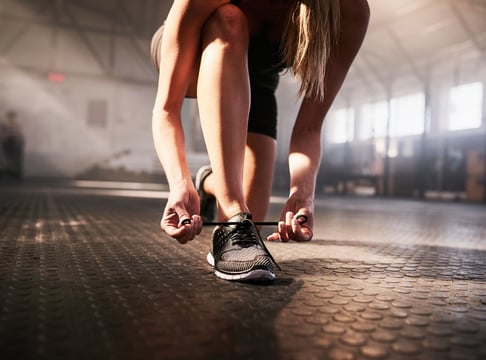 Do you remember the last time you went on an extended vacation, came back home, jumped into the gym and your favorite class and thought you could pick right back up where you left off? You might remember feeling like you were not going to make it through the class and were so sore for days on end. And that was just after a vacation consisting of a long rest, relaxation, and food freedom. Just think what you may encounter once you return to your favorite class or training group after two to three months of quarantine.
Do you remember the last time you went on an extended vacation, came back home, jumped into the gym and your favorite class and thought you could pick right back up where you left off? You might remember feeling like you were not going to make it through the class and were so sore for days on end. And that was just after a vacation consisting of a long rest, relaxation, and food freedom. Just think what you may encounter once you return to your favorite class or training group after two to three months of quarantine.
Now if you have been able to keep up your training intensity during this time, that’s awesome, and what I’m talking about might not apply to you. But I would argue that most of us, even with the best intentions, might not have been exercising at the same intensity in which we left our favorite facility. And if you jump back in too fast, at too furious of an intensity, you could find yourself with far worse than a case of sore muscles—and maybe even losing your lunch during class.
As you make your way back into your gym and classes, here are five helpful tips that will aid in keeping you safe and free from injury so you don’t get knocked out for another couple of months.
Reset Your Mindset
I think the most important step in getting back to your previous fitness level is being okay with not being at your previous fitness level. There is no room for negative self-talk because your deadlift isn’t Instagram-worthy right now, or running a mile is now incredibly challenging when it was once a warm-up. Think short-term adjustment at the beginning as you get your legs back underneath you. Find the little victories and be proud of them as you continue to ramp back up to previous intensities.
Start Slow and Add Gradually
Stave off injuries or worse by starting slow and adding intensity progressively throughout the first 8–10 sessions back. Starting off too heavy or too fast can lead to physical injuries as well as emotional setbacks. Build some confidence every session, and you will be back to your prime self in no time, safely!
Do an RPE System Check
Do a frequent body system check using Rate of Perceived Exertion (RPE) scale. The Borg Scale is a rating chart from 6–20 of how hard you feel yourself working at any one given task. There is a modified version that is a simple 0–10 rating system. Either one correlates well with your heart rate and can provide a quick and reliable audit of how your body is reacting to exercise. If you feel like you are barely moving, you may be at a 6 or 7 (1,2); or if you feel like if you keep up the current intensity you may lose that lunch I mentioned earlier, you may be at an 18–20 (8–10). It’s quick and easy, does not require equipment, and can provide an accurate intensity level check. Do frequent system checks throughout your workout, and if you feel you are pushing to the higher numbers of that scale, you may want to back it down and gradually work up to that intensity level.
Warm Up/Prep for Movement
Take the time to properly warm up and prepare yourself for the work at hand. This message is not new, and should always be practiced, but even more so now that you may have had a lengthy layoff. Consider this as part of your workout and you are more likely to complete it every time; don’t treat it as an option that is nice to do if you have the time. Make time! Foam rolling and soft tissue techniques, dynamic warm-up drills, and stability work should all be completed before jumping into a training session or your favorite class. Five to seven minutes can save you months in rehabbing an injury that could have been avoided.
Hydrate and Recover
Same as above, not a new message but a super-important one these days! Start hydrating now if you have been lacking in that area. Don’t wait until midway through a training session to start fluid intake. If you are following the rule of thumb and ingesting half your body weight in ounces of water daily, you are in a great position. Just like your warm-up, take the time to cool down and perform recovery drills post workout. These will help with soreness and increase mobility while slowing down your mind to focus on the victories you just grabbed in the workout. Slow down the systems and reward yourself for a job well done!
***
We were confident that this day would come when we could get back to our gyms, groups, and classes and get moving like we did before everything changed. Now that it is here, please take the proper steps in protecting yourself against injury or even worse. It may take some time to get back to where you once were, but it will be well worth it!
This blog was written by Tony Maloney, ACSM Certified Exercise Physiologist and Fitness Center Manager. To find out more about the NIFS bloggers, click here.

